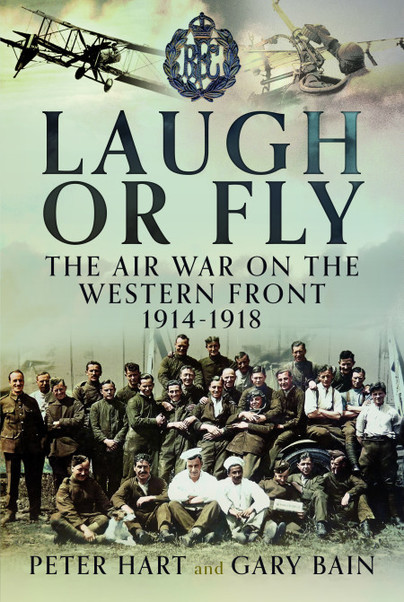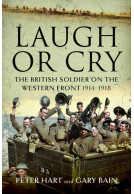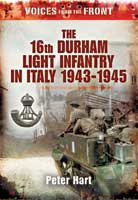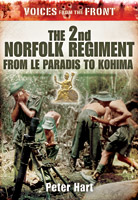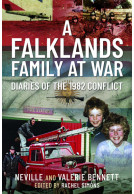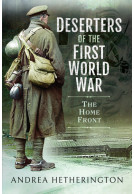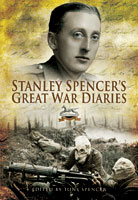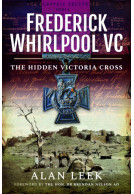Laugh or Fly (ePub)
The Air War on the Western Front 1914 – 1918
Imprint: Pen & Sword Military
File Size: 7.5 MB (.epub)
Pages: 272
Illustrations: 8 mono illustrations
ISBN: 9781399050166
Published: 31st July 2024
| Other formats available - Buy the Hardback and get the eBook for £1.99! | Price |
|---|---|
| Laugh or Fly Hardback Add to Basket | £25.00 |
A rip-roaring gallop through the lives of the Royal Flying Corps air crew in the Great War. They lived their lives amidst a strange dichotomy as they moved from safety to dire danger, and back again in a matter of hours. This created a dreadful strain that could soon shred anyone’s mental health. On the ground they were cloistered in simple but adequate accommodation several miles behind the lines. Farmhouses, barns and huts were used, but they were all far better than the squalor faced by the infantry scurrying in their muddy trenches. Flying personnel were blessed with beds and blankets. They could set up a decent mess and socialise to their heart’s content. A smorgasbord of entertainments, with perhaps an old out of tune piano, access to drink and occasional vigorous games of mess rugby. There were visits to local towns which offered tantalizing glimpses – and sometimes more - of the female of the species. A glimpse was probably never enough for most of these very young men. What more could a chap want?
But when they were flying over the front it was no laughing matter. Death lurked in the skies, zooming in its ‘winged chariots’ out of the sun, or bursting from the clouds. A moment’s loss of concentration, or tactical blunder, could consign them to being shot down and falling thousands of feet until the crunching impact of terra firma brought a terrible relief. But better that than a punctured petrol tank, the first flickers of flame, then the roaring inferno and the agonies of incineration.
There was little or nothing for them to laugh about in the air. But when back on the ground they tried to put aside their fears.
“… as an introduction to the roots of the RAF, the material in Laugh or Fly - The Air War on the Western Front 1914-1918 is good.”
Over the Front
As featured in
RAF News - February 21, 2025
“In reading Laugh or Fly you will fly with aircrew in various types of airplanes over every major and minor battle fought by the British on the Western Front from 1914 to 1918. You will read of their intimate fears, skills, and triumphs, and of the realities of loss after grueling air battles.”
Roads to the Great War
Read the full review here
The genesis of the Royal Flying Corps in 1912 to the Armistice is the subject of this work of 12 chapters. The dangers of early military flight and the men who chose to indulge in and write about it such as Hugh Trenchard, Robert Lorraine, Lanoe Hawker, Sholto Douglas and Louis Strange - precursors to such famous names as Edward Mannock, James McCudden, Cecil Lewis and others - are well described. This is not a history of the RFC or Royal Naval Air Service, the aircraft, armaments or engines but a collection of the writings, letter and diaries of those who fought in the nascent machinery of ‘winged warfare’. Their fears, experiences, impressions, joys and hatreds are here revealed in often stark and shocking narrative. Far from a psychological gloom-fest I laughed out loud at the japes & capers pulled by these pilots including Mannock’s off duty antics and Lorraine’s thespian poses for the benefit of their subordinates. Of arts and farces there are many including the origin of the term ‘Archie’ or ‘Archibald’ for anti-aircraft fire courtesy of music hall legend George Robey (‘certainly yes!’).
The Western Front Association
The chapter ‘Fokker Scourge’ will thrill and horrify as the RFC/RNAS struggled with the E1 Eindekker and its synchronised machine gun. The nail biting incident of the jammed Lewis drum is recounted by its survivor Louis Strange who had been enjoying his day out in his Martinsyde in May 1915 ! Once read never forgotten.
The frustrations of being outclassed in a BE2c, especially when flown by an Immelmann or Boelcke, tempted air mechanic Ira Jones to remove his Lewis gun from its mounting, lean over the side of the nacelle and from the shoulder fire a burst at the Fokker below promptly dropping the gun and nearly striking the enemy aeroplane with it. The German pilot immediately broke off the attack and flew away probably assuming the British were prepared to hurl even their weaponry in an attempt to redress the imbalance of their respective aircraft.
The daily routine of maintenance by dedicated ground crews is explained as a counter point to the better-known activities of air crew. Also the authors cover the liaison between RFC officers & their Royal Artillery colleagues resulting in greater understanding and more effective counter battery bombardments and barrages, topics ignored in other books.
Some myth busting and controversy flirting is indulged: the stereotype of the nightly drunken party is put in perspective as ‘not the norm’ though alcohol at altitude is acceptable. The doubts regarding the veracity of some of Billy Bishop’s victories is aired, the benefit being given to that courageous and decorated leader thus avoiding further controversy.
Combat stress and its effects are much documented in the diaries and letters of the many pilots quoted bringing perspective to this issue. Mounting anxiety from trench strafing, bridge and railway bombing running the gauntlet of well organised anti-aircraft fire is clearly expressed. That the medical authorities identified the symptoms, removing pilots including McCudden & Mannock from combat, contradicts the view that pilots were forced to fly until they broke or were shot down, though seldom were they ‘cured’.
Trenchard’s Independent Air Force features, though the RNAS does so rarely with Collishaw and Samson barely mentioned. France is represented by Georges Guynemer’s visit to 56 Squadron and his mock dogfight with Cecil Lewis resulting in huge respect for the French Ace and his Spad XIII. The resume of the ‘100 Days’ is referred to as mostly ‘Allied’ in the current historical fashion for the collegiate effort of equals. A nod to the quality of equality of the Canadians, Australians and BEF must be read between the lines.
This anthology is as exciting as it is informing, best appreciated by those with some knowledge of Great War aviation but not exclusively so. There has been an error in the printing of the notes so they do not line up correctly with the chapters, but this interferes not with a rattling good read which is thoroughly recommended.
As featured in
AirMail - Royal Air Forces Association - Autumn 2024
About Gary Bain
Gary Bain joined the Junior Leaders and served in the Royal Army Ordnance Corps working with the Intelligence Corps before leaving the army and rising in civilian life to be Head of Commercial at Transport for London.
About Peter Hart
Peter Hart was for 40 years an oral historian with the Imperial War Museum Sound Archive. He has written several books on both world wars, appeared on television documentaries and is a tour guide to Gallipoli and the Western Front.







